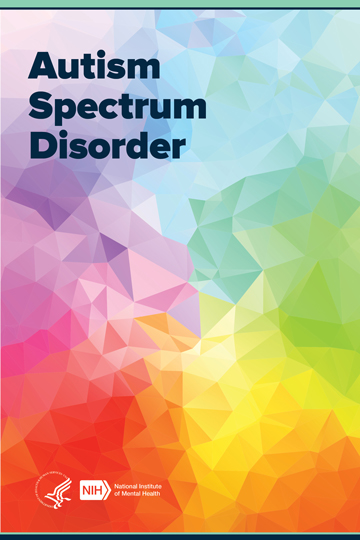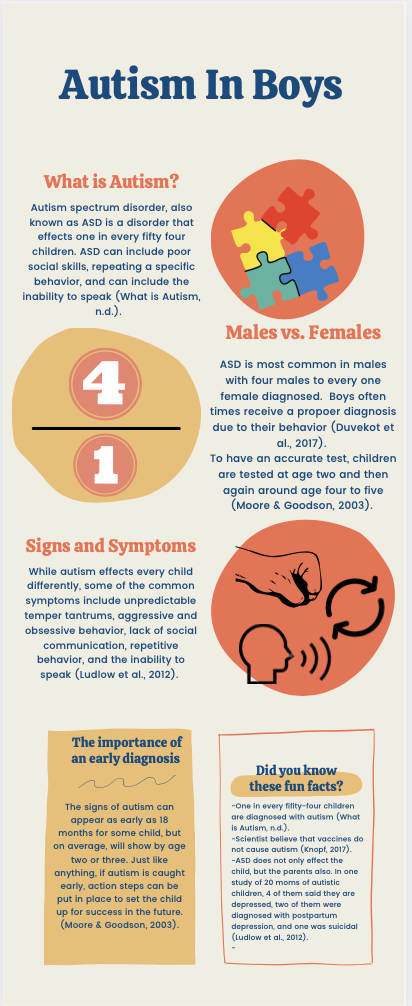Comprehending the Influence of Behavioral Autism on Day-to-day Live and Social Interactions
You could not realize how deeply behavioral autism impacts everyday life and social interactions. Individuals on the spectrum typically navigate a globe filled up with communication obstacles and sensory overload. These difficulties can lead to irritation and isolation, influencing their relationships and total health.
Defining Behavioral Autism and Its Qualities
Behavioral autism, frequently referred to as autism range condition (ASD), includes a series of conditions characterized by obstacles in social communication, communication, and recurring actions. You could observe that individuals with ASD commonly struggle to analyze social hints, which can result in misconceptions in discussions. They may find it tough to develop eye contact or participate in small talk, making social situations feel frustrating.
Communication difficulties can show up in numerous ways, from delayed speech growth to a choice for utilizing less words. Repeated behaviors, such as hand-flapping or shaking, can act as coping mechanisms to take care of stress and anxiety or sensory overload. These attributes can profoundly impact life, making it vital for you to recognize and support those with ASD. By acknowledging these qualities, you can promote an environment that advertises acceptance and motivates effective interaction, helping individuals with autism flourish in their day-to-day interactions.
The Range of Autism: Recognizing Irregularity in Behavior
Autism spectrum disorder (ASD) isn't a one-size-fits-all diagnosis; it varies commonly amongst people. You might notice that some people with ASD display light signs, while others may deal with more substantial challenges. This irregularity can show up in actions, rate of interests, and sensory level of sensitivities. You might run into people that are highly verbal and engage easily in discussions, while others could like singular activities or interact non-verbally.
In addition, the means individuals with ASD react to sensory input can vary substantially; some may be bewildered by intense lights or loud sounds, whereas others thrive in stimulating settings. The spectrum additionally consists of distinctions in social communications; some people may struggle to interpret social signs, while others navigate social setups with family member ease. Comprehending this variability is necessary, as it aids you value each person's one-of-a-kind experience and tailor assistance to their certain needs, cultivating a more inclusive setting for everybody.
Communication Difficulties Dealt With by People With Autism
When you engage with individuals on the autism range, you may notice their distinct communication obstacles. They usually face troubles with both nonverbal and verbal signs, which can influence their social communications. Recognizing these barriers is essential for cultivating better links and support.

Verbal Communication Troubles
Lots of people on the autism spectrum experience verbal interaction troubles that can considerably influence their day-to-day communications. Your tone, quantity, or rate could not straighten with social expectations, causing others to misunderstand your intents. Identifying these difficulties can aid you and your assistance network develop approaches to boost interaction and promote much better connections with others in your everyday life.
Nonverbal Communication Barriers
Verbal communication isn't the only obstacle people on the autism spectrum face; nonverbal interaction obstacles can be equally as considerable. You may find it difficult to interpret body movement, faces, and eye get in touch with, which are important for efficient interaction. These difficulties can bring about misconceptions or false impressions of social signs, making communications feel frustrating or confusing. You may battle to share your own emotions through nonverbal means, leaving others unsure of your sensations or intents. This detach can produce sensations of seclusion and aggravation. Identifying these barriers is important for promoting understanding and empathy in your communications. By attending to nonverbal interaction, you can discover strategies to improve your social experiences and boost your general lifestyle.
Social Communication Impacts
Social interactions can usually really feel frustrating due to the unique communication obstacles encountered by individuals with autism. You may fight with interpreting social signs, making it difficult to comprehend mockery or body language. This can lead to misconceptions or awkward minutes in conversations. Furthermore, launching and maintaining conversations may really feel difficult, creating anxiety in social situations. You may like structured settings, making spontaneous interactions awkward. It's additionally usual to experience problem in involving in small talk, which can prevent developing new relationships. Recognizing these challenges can assist you locate approaches to boost interaction, such as exercising social abilities in risk-free setups or making use of visual help - Autism Therapist. Comprehending your requirements enables you to navigate social communications with better self-confidence and convenience.
Social Communication and Connection Building in Autism
While structure partnerships can be testing for people with autism, comprehending their distinct point of views and communication styles can foster meaningful connections. You could discover that several people on the spectrum like straight interaction and may deal with social signs or little talk. By being straightforward in your interactions, you can assist develop a setting where they feel comfy.
Involving in shared rate of interests can likewise offer as a bridge to deeper links. Whether it's a hobby, a preferred program, or a common passion, these typical strings can open doors to friendship.
Life Regimen: Browsing Techniques and difficulties
Maneuvering life routines can be specifically challenging for individuals with autism, specifically when unexpected modifications happen. You could locate comfort in having a structured schedule, as it helps you anticipate what's next. It's regular to really feel overwhelmed or nervous when disturbances take place. To navigate these difficulties, take into consideration executing visual schedules or checklists. These devices can give quality and peace of mind.
Establishing a regimen that consists of sensory breaks can additionally be useful. You can plan time-outs throughout your day to charge. It's essential to connect with those around you, allowing them understand your preferences and demands. This aids produce an understanding atmosphere.
Last but not least, technique mindfulness strategies to handle stress and stress and anxiety. Easy breathing exercises or grounding strategies can make a significant difference. By including these methods, you can improve your daily regimen and lessen interruptions, making life really feel a lot more manageable.
Staminas and Capabilities of Individuals on the Autism Range
Recognizing everyday life regimens is just one aspect of the autism experience. Lots of individuals on the autism range have exceptional strengths and capabilities that set them apart.
Additionally, your memory abilities typically beam, particularly in areas of passion. Autism Therapist. This propensity for preserving information can make you an important resource in fields like art, innovation, or scientific research. You might also show strong visual reasoning, enabling you to imagine complicated ideas and fix issues artistically
Furthermore, your unique perspective on the world can foster empathy and understanding in others, enhancing social interactions. Accepting these toughness not just improves your confidence but likewise assists others appreciate the varied abilities you offer the table.
Producing Comprehensive Environments for Individuals With Autism
Creating comprehensive atmospheres for individuals with autism starts with creating sensory-friendly areas that satisfy their one-of-a-kind demands. You can additionally promote opportunities for social communication, aiding to construct friendships here and links. By making these changes, you'll contribute to a much more welcoming environment for everybody.
Designing Sensory-Friendly Spaces
While designing sensory-friendly areas, it's important to reflect on the one-of-a-kind needs of individuals with autism. Begin by selecting relaxing shades and soft lighting to create a relaxing setting. Incorporate peaceful zones where individuals can retreat and charge when overwhelmed. You'll intend to minimize loud noises and interruptions, making use of soundproof materials or white sound devices to assist maintain tranquility. Take into consideration responsive components like soft textiles or fidget-friendly objects that can provide convenience. Identify that spaces are versatile, allowing for easy reformation to accommodate different activities. Finally, consist of visual routines or clear signage to assist individuals navigate the room with confidence. By attentively incorporating these elements, you can produce an inviting environment that sustains sensory demands and advertises overall wellness.
Advertising Social Interaction Opportunities
Designing sensory-friendly spaces not only addresses specific comfort but additionally sets the phase for significant social interactions amongst people with autism. Encourage peer mentoring, coupling individuals with autism with encouraging peers who can guide them via social circumstances. By executing these strategies, here you can boost social possibilities, assisting people with autism develop friendships and strengthen their social skills in a secure, welcoming environment.

Often Asked Inquiries
Just How Can Friends Support Someone With Behavioral Autism?
You can sustain a close friend with behavior autism by holding your horses, listening actively, and appreciating their limits. Involve in activities they enjoy, connect honestly, and produce a comfortable environment where they really feel valued and understood.
What Resources Are Available for Moms And Dads of Children With Autism?
You can explore various resources for moms and dads of children with autism, consisting of support system, academic websites, and neighborhood social work. Linking with other moms and dads can additionally provide useful insights and shared experiences to aid browse obstacles.
Can Behavioral Autism Adjustment With Time?

Yes, behavior autism can change gradually. You could observe changes in communication, social abilities, and habits as your kid grows. Early intervention and assistance typically play crucial functions in these developmental modifications.
Exactly How Do Sensory Sensitivities Influence Life?
Sensory sensitivities can make day-to-day experiences frustrating. You may have problem with loud noises or bright lights, causing anxiety or evasion. Discovering environments that suit your requirements can substantially enhance your convenience and overall every day life.
What Prevail Misconceptions About Behavioral Autism?
You may think behavior autism just affects communication abilities, however it's even more complex. Several presume people lack empathy or knowledge, which isn't real. Comprehending these false impressions aids foster approval and support for those on the range.
Behavioral autism, usually referred to as autism spectrum condition (ASD), encompasses a variety of problems characterized by obstacles in social interaction, interaction, and recurring behaviors.Social communications can typically feel overwhelming due to the unique communication obstacles faced by individuals with autism.Creating sensory-friendly spaces not only addresses individual comfort however additionally sets the phase for purposeful social interactions among people with autism. Urge peer mentoring, combining individuals with autism with helpful peers that can assist them with social situations. By applying these techniques, you can improve social opportunities, assisting people with autism develop here friendships and reinforce their social abilities in a secure, inviting setting.